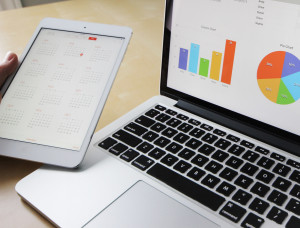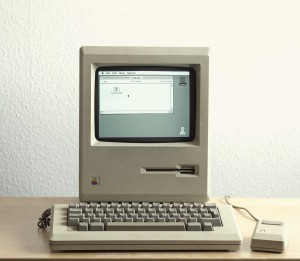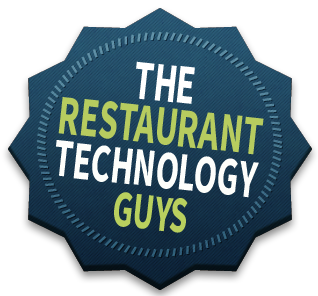 Choosing a new POS system today requires more than just picking the best program on the market. Restaurateurs have to decide between two different types of technology altogether: a traditional, “on-premise” system, or a cloud-based software solution.
Choosing a new POS system today requires more than just picking the best program on the market. Restaurateurs have to decide between two different types of technology altogether: a traditional, “on-premise” system, or a cloud-based software solution.
Understanding the difference between the two will make the choice easier, and open up new opportunities to make your operations more efficient and profitable.
SaaS and on-premise software do the same thing – they make restaurant operations possible by tracking inventory, sales, labor, and other aspects of your business. The difference is where these programs live, and the opportunities they provide.
On-premise software runs on computers that stay on site at your restaurant, rather than at a remote facility. In contrast, Software as a Service (SaaS) uses applications that are hosted by a vendor or service provider and made available over the Internet.
 On-premise software has been around longer than SaaS, but the latter is making up ground quickly. According to a Forbes report earlier this year, worldwide SaaS software revenues are forecasted to reach $106 billion in 2016, increasing 21 percent over projected 2015 spending levels. By 2018, 59 percent of the total cloud workloads will be Software-as-a-Service (SaaS) workloads, up from 41 percent in 2013.
On-premise software has been around longer than SaaS, but the latter is making up ground quickly. According to a Forbes report earlier this year, worldwide SaaS software revenues are forecasted to reach $106 billion in 2016, increasing 21 percent over projected 2015 spending levels. By 2018, 59 percent of the total cloud workloads will be Software-as-a-Service (SaaS) workloads, up from 41 percent in 2013.
SmartBridge offers a great breakdown of the differences between on-premise software and SaaS, and we’ll analyze a few of those differences here.
As the data above demonstrates, SaaS and cloud-based solutions are expanding quickly throughout multiple industries, including restaurants.
SaaS offers several advantages over on-premise software that operations managers are gravitating towards. The first is the relative ease of implementation, as these programs use a ready-made platform that has already been designed and tested extensively by the vendor. Also, since the vendor is responsible for the infrastructure, restaurant owners and managers are not susceptible to the risks of limited availability or disaster recovery.
 Since SaaS systems are pre-built, there may be fewer opportunities for customization than on-premise systems. However, your IT needs will be reduced compared to your own on-site software, and fewer internal resources will be necessary to provide support.
Since SaaS systems are pre-built, there may be fewer opportunities for customization than on-premise systems. However, your IT needs will be reduced compared to your own on-site software, and fewer internal resources will be necessary to provide support.
Also, the flexibility of SaaS makes adjusting the scale of your operation easier in comparison to on-premise software.
For new restaurants, selecting and implementing an SaaS system comes with a lower entry cost, and upgrades are generally less expensive or included in your package since the system is based online. Of course, this is not as helpful for existing restaurants, which would be responsible for offloading their current system and investing in SaaS. Also, ongoing subscription fees for using an SaaS will have to be factored into your budget.
Finally, we’ve mentioned how helpful the increased access to data and flexibility can be with SaaS, but there is a cost. Your data is no longer in your own hands, it’s entrusted to the third-party vendor that supplies your software.
Furthermore, SaaS applications are usually ‘multi-tenant.’ This means that multiple end user customers share one database and are partitioned from each other via internal security, not separate servers. SaaS providers work hard to ensure that your information is as secure as possible, but online security is a moving target that requires the data protectors to constantly stay one step ahead of the bad guys.
The most notable benefit of on-premise software over SaaS is the control and ownership of your data. Unlike SaaS or cloud-based solutions, your data is stored on machines that belong to you.

Pro Tip: If your POS system runs on a computer like this, it’s time for an upgrade.
However, that ownership also means that you are responsible for maintaining both hardware and software, making upgrades (which can be expensive and time-consuming), making the data available as needed, and backing up your information in case of disaster or emergency.
Speaking of “machines that belong to you,” investing in the hardware necessary to run on-premise software will add tangible assets to your inventory. Of course, setting up the infrastructure and equipment, as well as training personnel to use it, will require additional investments.
Once the equipment is set up, however, maintenance fees are usually low compared to the ongoing fees for SaaS usage.
Choosing the right system for your restaurant will require time and analysis. What fits your environment the best? Which of the features above jumped out at you? Which drawbacks sounded the worst for your business? These answers will help you identify what you need.
